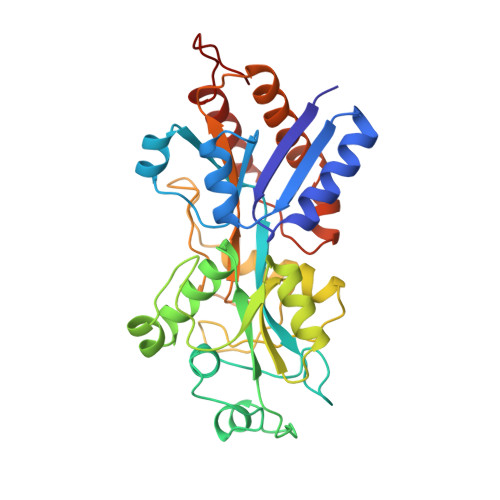Modulation of a salt link does not affect binding of phosphate to its specific active transport receptor.
Yao, N., Ledvina, P.S., Choudhary, A., Quiocho, F.A.(1996) Biochemistry 35: 2079-2085
- PubMed: 8652549
- DOI: https://doi.org/10.1021/bi952686r
- Primary Citation of Related Structures:
1OIB, 1QUI, 1QUJ, 1QUK, 1QUL, 2ABH - PubMed Abstract:
Electrostatic interactions are among the key forces determining the structure and function of proteins. These are exemplified in the liganded form of the receptor, a phosphate binding protein from Escherichia coli. The phosphate, completely dehydrated and buried in the receptor, is bound by 12 hydrogen bonds as well as a salt link with Arg 135. We have modulated the ionic attraction while preserving the hydrogen bonds by mutating Asp 137, also salt linked to Arg 135, to Asn, Gly or Thr. High-resolution crystallographic analysis revealed that Gly and Thr (but not Asn) mutant proteins have incorporated a more electronegative Cl- in place of the Asp carboxylate. That no dramatic effect on phosphate affinity was produced by these ionic perturbations indicates a major role for hydrogen bonds and other local dipoles in the binding and charge stabilization of ionic ligands.
Organizational Affiliation:
Department of Biochemistry, Baylor College of Medicine, Houston, Texas 77030, USA.















